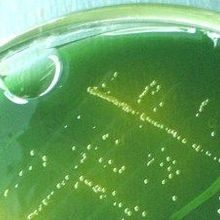Login
Subscribe404
Not Found
Is this what you were looking for?
tag pain microbiology genetics genomics culture

Engineering the Microbiome: CRISPR Leads the Way
Mariella Bodemeier Loayza Careaga, PhD | Mar 15, 2024 | 10+ min read
Scientists have genetically modified isolated microbes for decades. Now, using CRISPR, they intend to target entire microbiomes.

Microbes Responsible for Stealing Aquarium Medicine
Amanda Heidt | Feb 1, 2022 | 6 min read
Researchers discover that bacteria break down medicinal compounds for their nitrogen, solving a mystery that has vexed aquatic veterinarians for years.

How Intracellular Bacteria Hijack Your Cells
Catherine Offord | Dec 1, 2022 | 10+ min read
Scientists studying pathogens such as Chlamydia, Legionella, and Listeria get a master class in how to control the internal workings of mammalian cells.
Keeping Tabs on Cultured Cells
Lissa Harris(lharris@the-scientist.com) | Mar 13, 2005 | 6 min read
THE CULTURE WITHIN:Photo courtesy of Drs. C.C. Uphoff and H.G. Drexler, DSMZ-German Collection of Microorganism and Cell Cultures, Braunschweig, GermanyHeLa cell line infected with Mycoplasma hyorhinis. Scanning electron micrograph of critical point-dried cell culture grown on cover slips. Note the loop- and rod-like mycoplasmas attached to the host cell membrane. Smaller web-like structures on the cell surface represent microvilli of the cell. Original magnification 3,000×.Mycoplasmas have

Return of the Worms
Catherine Offord | Dec 1, 2021 | 10+ min read
Immunologists and parasitologists are working to revive the idea that helminths, and more specifically the molecules they secrete, could help treat allergies and autoimmune disease.

Dethroning E. coli?
Alison F. Takemura | Jun 23, 2016 | 1 min read
Some scientists hope to replace microbiology’s workhorse bacterium with fast-growing Vibrio natriegens.

Going Viral
Breeann Kirby and Jeremy J. Barr | Sep 1, 2013 | 10+ min read
From therapeutics to gene transfer, bacteriophages offer a sustainable and powerful method of controlling microbes.

Follow the Coronavirus Outbreak
The Scientist | Feb 20, 2020 | 10+ min read
Saliva tests screen staff and students at University of Illinois; Study ranks species most susceptible to SARS-CoV-2 infection; COVID-19 clinical trials test drugs that inhibit kinin system
Making Things Grow: Insect Cells, Stem Cells, and Primary Cell Lines All Pose Challenges for Cell Culturists
Laura Defrancesco | Jun 21, 1998 | 5 min read
Date: June 22, 1998 Insect Cell Culture Media, Suppliers of Primary Cell Culture Media Advantages for Protein Expression Studies Since the mid-1950s cultures of insects--cockroaches, fruit flies, and leafhoppers, to name a few--have been the object of quiet study by physiologists and cell biologists. But along came genetic engineering and suddenly insect cultures have been put in the spotlight since they provide advantages over both bacterial and mammalian systems for recombinant protein prod

Bacteria Harbor Geometric “Organelles”
Amber Dance | Dec 1, 2018 | 10+ min read
Microbes, traditionally thought to lack organelles, get a metabolic boost from geometric compartments that act as cauldrons for chemical reactions. Bioengineers are eager to harness the compartments for their own purposes.